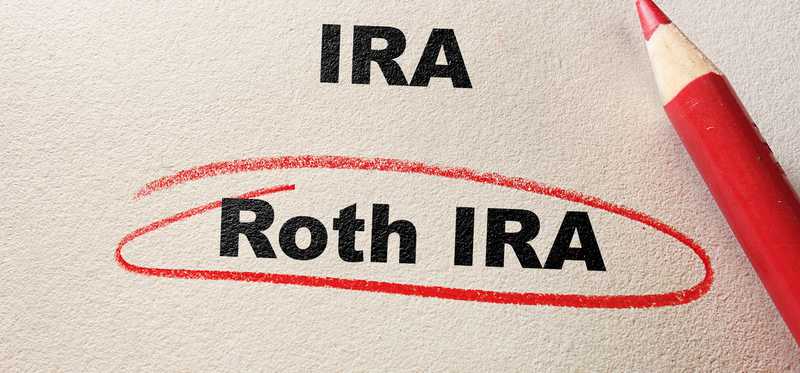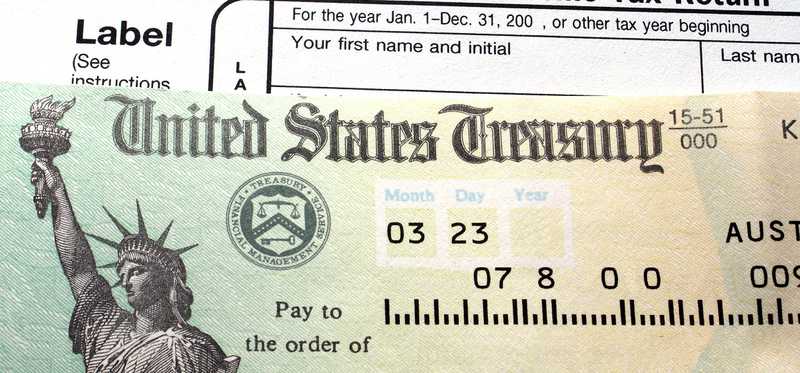19 Tax Moves to Make Before 2019 Begins

19 Tax Moves to Make Before 2019 Begins
Tax season is right around the corner
2018 is drawing to a close, and it's almost time for another tax season to get started. If you're like most people, you probably haven't thought about taxes at all for months, but now's the time to start getting organized in order to put yourself in the best possible position when you file your taxes next April. Below, you'll find 19 useful tips that can produce some tax savings -- but you'll need to act fast to take full advantage.
Previous
Next

1. Make sure you've had enough tax withheld from your paychecks
Many people had their take-home pay affected by tax reform early this year, because tax rates changed. Unfortunately, that could also put you in a position in which your total withholding isn't enough to cover your entire tax bill. It's smart to estimate what your taxes will be and then to adjust your withholding if it's insufficient. Otherwise, you could be on the hook for interest and penalties. Talk with your HR department to see if filing an amended Form W-4 is the best way to get things right before year-end.
Previous
Next

2. Look to see if you have to take an RMD
Required minimum distributions from traditional IRAs and 401(k)s become mandatory for those who reached age 70 1/2 at some point during 2018. In the first year only, you have an extra grace period until April 1 to make the required withdrawal, but after that, you'll have to get your distribution by Dec. 31. The following link gives some guidance on what your RMD amount is, but it's a big deal to get it right, because if you don't get it out of your retirement account on time, you could owe a 50% penalty.
Previous
Next

3. Make the most of your 401(k)
If you have access to an employer-sponsored retirement plan like a 401(k) plan at work, then it's smart to use it. With a 401(k), you can set aside even more money. The base limit on contributions for 2018 is $18,500, making 401(k)s one of the biggest opportunities for people to save. With many employers matching employee contributions or adding profit-sharing money to the pot, it's worth being part of your workplace plan.
Previous
Next

4. Use an HSA if you're eligible
To get some extra deductions, contributions to a health savings account can be useful. In order to qualify, you must have a health insurance plan that has high deductibles that meet IRS standards. Those who qualify and have an individual-only policy can contribute up to $3,450 to an HSA, while those with broader all-family coverage can contribute $6,900. Money going into an HSA is tax-deductible, and withdrawals for qualifying medical expenses are tax-free, making health savings accounts one of the best savings vehicles available.
Previous
Next

5. Take advantage of catch-up contributions
If you're 50 or older, take a look at some of the incentives that the IRS gives you to save more toward retirement and other needs. Among retirement accounts, you can contribute an extra $6,000 to a 401(k) and an extra $1,000 to an IRA if you're 50 or older, and HSA participants who are 55 or older can add $1,000 to the maximum contribution limits on health savings account contributions.
Previous
Next

6. Use your flex money
If you have a flexible spending account at work, time's running out to use it. If you contributed money to your flex plan early in the year, you got great tax savings from the pre-tax treatment of your contributions, and you don't have to pay tax on withdrawals used to cover medical expenses. However, flex plans can have different provisions for money that's left over at the end of the year, and in some cases, if you don't use it, you'll lose it. Look closely at your plan details to see when you have to zero out your account or risk forfeiting what's left.
Previous
Next

7. Harvest your tax losses
With market volatility having hit many investors, selling losing investments can give you a valuable tax break. By using tax loss harvesting, you can recognize capital losses that you can use to offset capital gains or cut your other taxable income by up to $3,000 each year. To use the strategy, you have to sell your losing investments by Dec. 31, and it's generally a good idea to get done before the last minute to ensure there aren't any problems in getting the transaction done.
Previous
Next

8. Give stock to charity (and get a big writeoff)
Selling a winning stock can create a big tax bill, but giving away a winner can benefit you two ways. You'll not only avoid paying tax on capital gains but also get to deduct the full market value of the investment as an itemized deduction. Moreover, any investment is eligible, so even if you have a winner that's not a stock, it's worth looking closely at this strategy to see how it can benefit you and your favorite charity as well. Just make sure to get things moving well before year-end, because it can take time for brokers and charities to work together to meet a Dec. 31 ultimate deadline.
Previous
Next

9. Use your kids as a tax break
High-income parents can take advantage of their children's lower tax bracket to save some money. By putting investments in your child's name, you'll be able to shelter $1,050 in investment income from tax and have the child's rate apply to an additional $1,050. Above that, new tax rules offer an attractive low rate on up to $2,550 of additional income. If you put assets in your child's name, it has to be a bona fide transfer to qualify. But if you're willing to do that, you can save thousands in taxes with the strategy.
Previous
Next

10. Save for school with a 529 plan
529 college savings plans are a great vehicle for parents and others who want to save toward a student's college education. Contributions aren't federally tax deductible, but withdrawals are tax-free as long as they go toward qualifying educational expenses. With tax reform extending the benefits not just to college costs but also costs of K-12 schools, it's worth looking at 529 plans to see if they can give you some extra protection from taxes.
Previous
Next

11. Catch up on estimated taxes
Taxpayers who get a lot of income from something other than a standard job often have to pay quarterly estimated taxes. Self-employed independent contractors are often in this category, or if you get a lot of income from investments, then you might be on the hook as well. By now, it might be too late to avoid interest and penalties entirely, but by running the numbers on IRS Form 1099-ES, you'll at least be able to catch up and stop the meter from running up any additional charges.
Previous
Next

12. Look at converting retirement accounts to a Roth IRA
If you like tax-free growth, a Roth IRA is your best bet. But many people aren't able to make direct contributions to a Roth IRA because of income limitations. For them, a Roth conversion can be a smart move. You'll have to treat the converted amount as taxable income, but from then on, you'll never have to pay taxes on withdrawals even in retirement as long as you follow the rules. This is one situation in which taking a one-time tax hit can pay dividends for decades to come.
Previous
Next

13. Check to see if your Social Security will be tax-free
If you make too much money, then any Social Security income you receive can be subject to income tax. To see if you're potentially subject to tax, take your income from other sources and then add half of what you get from Social Security. If you're single, a number above $25,000 could be problematic, while joint filers need to keep the figure below $32,000. Sometimes, it's a year-end withdrawal from a traditional IRA or 401(k) that kicks taxpayers above the threshold, so now's a good time to check to see if you can potentially avoid paying taxes on Social Security benefits by making some smart timing moves in other areas of your financial planning.
Previous
Next

14. Plan your year-end gifts
Now's the time of the year when many people make gifts, but for the wealthy, making transfers of wealth that are exempt from gift and estate tax is smart planning. In 2018, you can give up to $15,000 to any individual you want without paying a gift tax, and for those with large estates, such gifts can be a great way to avoid ending up owing estate taxes to Uncle Sam at their death.
Previous
Next

15. An even bigger tax-free gift opportunity for the ultra-rich
In addition to allowing annual gifts, the gift tax rules also feature extremely high lifetime exemptions from gift and estate tax. For 2018, the figure is $11.18 million in 2018, more than double the amount for 2017. With the help of an estate planning professional, you can structure lifetime gifts to take advantage of this exemption. However, the gift tax rules can get complicated, so trying to navigate the field without expert help can be dangerous.
Previous
Next

16. Seek friendlier locations -- from a tax perspective
One of the most controversial changes in tax reform was the limitation of deductions for state and local tax payments. Unlimited deductions used to be allowed, but starting in 2018, you'll only be allowed to deduct up to $10,000 of state and local taxes. Some saw the move as a direct attack on high-tax states, but it's true that by moving to a tax-friendlier jurisdiction, you might avoid paying so much that you end up missing out on deductions due to the limit.
Previous
Next

17. Look at your home equity loans
Tax reform changed the rules for deducting mortgage interest, putting new limits on regular mortgage debt but also making most home equity loan debt ineligible for interest deductions. However, if you used the home equity loan to buy, build, or improve your home, the interest is still deductible. Paying down nondeductible home equity loans makes sense under the new rules in order to avoid paying interest that you can't deduct.
Previous
Next

18. Business owners should consider a change
The cut in corporate tax rates from 35% to 21% got most of the headlines when tax reform became law, but other types of pass-through business entities like partnerships and LLCs also got favorable treatment. The new rules are complicated, but they make it critical for current business owners and those considering starting a business to talk to tax experts to see which form is likely to give them the best tax treatment.
Previous
Next

19. Contribute to an IRA
Strictly speaking, this suggestion isn't one that you have to get done before 2019 starts, because the IRS is generous enough to give you until mid-April 2019 to make an IRA contribution for the 2018 tax year. However, contributing now is a great way to let your money work harder for you, with a longer time to get tax-favored treatment for income and gains in the account. 2018 contribution limits are $5,500 for those younger than 50, or $6,500 for those 50 or older, and 2019 contribution limits are set to go up an extra $500.
ALSO READ: It's Official -- the IRA Contribution Limit Is Increasing for 2019
Previous
Next

Be smart with your taxes
Few people will be able to do all 19 of these things to save on their taxes. However, looking at the tips that apply to you can pay off next April.
The Motley Fool has a disclosure policy.
Previous
Next
Invest Smarter with The Motley Fool
Join Over Half a Million Premium Members Receiving…
- New Stock Picks Each Month
- Detailed Analysis of Companies
- Model Portfolios
- Live Streaming During Market Hours
- And Much More
READ MORE
HOW THE MOTLEY FOOL CAN HELP YOU
-
Premium Investing Guidance
Market beating stocks from our award-winning service
-
The Daily Upside Newsletter
Investment news and high-quality insights delivered straight to your inbox
-
Get Started Investing
You can do it. Successful investing in just a few steps
-
Win at Retirement
Secrets and strategies for the post-work life you want.
-
Find a Broker
Find the right brokerage account for you.
-
Listen to our Podcasts
Hear our experts take on stocks, the market, and how to invest.
Premium Investing Services
Invest better with The Motley Fool. Get stock recommendations, portfolio guidance, and more from The Motley Fool's premium services.